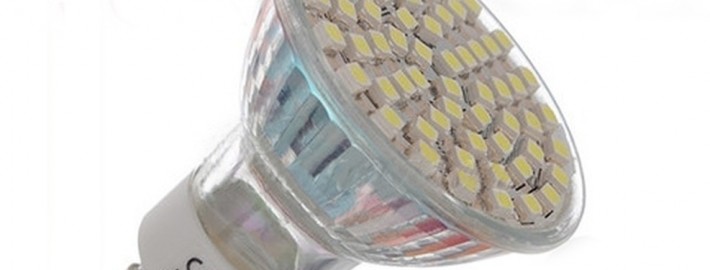Why You Need to Go To LED
Why Do You Need To Go To LED?
 If you are unfamiliar with LED lighting, now is the time to learn more. LED, stands for Light Emitting Diode, and lighting that utilizes this type of technology is becoming much more popular, especially in the United States and Western Europe.
If you are unfamiliar with LED lighting, now is the time to learn more. LED, stands for Light Emitting Diode, and lighting that utilizes this type of technology is becoming much more popular, especially in the United States and Western Europe.
LED lighting used to be more expensive than traditional incandescent light bulbs, but that is changing as more companies begin manufacturing LED lighting solutions, which combined with better technology, has significantly reduced the costs. Retailers such as Wal-Mart, Home Depot and Staples and Ikea are looking to increase their market share as more households begin to notice the benefits that LED bulbs have to offer.
One of the main advantages of switching to LED lighting is the fact that they are much more energy efficient, and households and commercial businesses alike can make significant savings on their energy bills. With energy savings as high as 80%, people and businesses can easily recoup the original financial outlay on LED lighting in as little as 5 years for homeowners, and as little as 2 years for businesses.
One of the main reasons why LED bulbs have become more popular is that more and more countries are now bringing in new regulations regarding traditional incandescent and fluorescent bulbs. It has been known for a long time that incandescent bulbs use a lot of energy, and although fluorescent bulbs have been making inroads in to the market due to their energy saving capabilities, there are problems with these bulbs too. These problems include the fact that they can take a while to reach maximum illumination, the light they emit can be harsh, and worst of all they contain mercury, which is harmful to the environment.
However, sales of LED lights and bulbs have been slower than expected, and this is partly due to the high price, with the average cost being around the $20 mark for a number of years. Therefore, people have been switching to halogen bulbs as a way to save money on their lighting costs, and LED lighting has often struggled to compete. Thankfully, those days are over, and it is now possible to purchase a 40 to 60 watt equivalent LED bulb for under $6 at retailers such as Home Depot, with the 65 watt equivalent sure to drop below the $10 mark soon.
At the time of writing, the two main players in the LED lighting market seem to be Philips and Cree, whilst other manufacturers such as Osram, SunSun and Ecosmart are starting to catch up. However, Cree and Philips seem to be putting more time, effort and money in to LED lighting technology, which has helped them to garner a larger share of the market.
Philips and Cree seem to have the edge on their rivals, at least for the time being, is the fact that their bulbs are capable of reducing the amount of heat normally generated by light bulbs. The engineering and transistor materials needed to make this happen accounts for one third of the total cost of manufacturing LED lights, and both Philips and Cree seem to have found away to reduce this amount to around 10%, whilst the other companies try to catch up.
There are however, still some concerns about LED lighting in the United States, and one of the big questions is whether LED lighting is able to comply with the state of California’s voluntary light quality Standard. In addition to which, there are questions regarding LED lighting and whether it’s close enough on quality of light to a traditional incandescent bulb.
One more additional concern that has been raised about LED lighting in the United States is whether LED bulbs are Energy Star qualified. According to a report by the United States Department of Energy, all LED lighting products need to be able to pass a number of tests that prove their effectiveness, these tests include:
The brightness needs to be equal to or better than pre-existing lighting solutions, for example fluorescent and incandescent bulbs, and the light needs to be spread over the area that is lighted by the fixture.
That the light output remains constant over time, with the only acceptable decreasing of light output being near the end of its lifecycle, which is around 35,000 hours or 12 years at 8 hours of usage per day.
Other tests include:
-
Maintaining quality color, with a shade of white light being constant and clear over its lifespan
-
As good or better energy efficiency than a fluorescent bulb
-
Instant light when switched on
-
Does not flicker when dimmed
-
Does not draw power when switched off
From a consumer’s point of view, comparing the above tests with different bulbs can be difficult in a store, and impossible online and not all retailers and manufacturers promote the same features.



